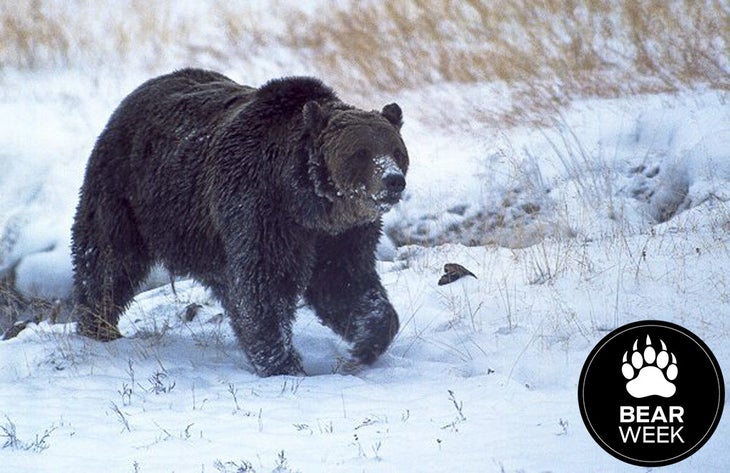Heading out the door? Read this article on the new Outside+ app available now on iOS devices for members! Download the app.

One basic rule of thumb for bear biologists and park rangers: If you have a tip to keep people safe in the backcountry, don’t keep it a secret. When it comes to bears, the National Parks Service puts out a suite of information—both at the national level, and within individual parks—to help keep visitor/bear interactions innocuous. But in 35 years as the bear biologist in Yellowstone National Park (home to 150 grizzlies), Kerry Gunther has learned more than most flyers.
1. Don’t drop your pack.
Bears aren’t actually interested in you, they just want whatever smelly stuff you’re carrying on your back…right? Wrong. “In almost every case, when a bear attacks, it’s a defensive reaction,” he said. “It doesn’t want your lunch.” According to Gunther, the old school of thought—ditch your pack and get moving—isn’t your best bet (which is why the Park Service stopped advising it between 15 and 20 years ago). Instead, Gunther advises keeping your pack on. The bulk will make you look bigger, which could dissuade the bear from messing with you, but it’s also good armor if the intimidation strategy doesn’t work. “Your pack protects a lot of your back. So you might get swatted at and bit, but you’re not going to have a single mark on you if the pack takes the brunt of that,” Gunther said.
2. Know the difference between black and grizzly bears.
It pays to know who you’re dealing with if you bump into a bear on the trail. Black and grizzly bears have different demeanors, and you’ll want to interact with them in different ways. According to Gunther, you can be more confrontational with black bears, which are relatively docile. Grizzlies aren’t so easy. “They have an aggressive nature, and if you use the same behavior back at them, you could make the situation worse,” he said.
In either case, make noise and back away while the bear is standing still or moving away from you. If it decides to come closer, stay put, stand your ground and seem big (now’s the time to use your bear spray if you have it). If that doesn’t work, that’s when knowing what species you’re dealing with is important. In a grizzly attack, lay prone with your pack between you and the bear and play dead. With black bears, you need to fight: Go for the nose.
When it comes to ID, don’t focus on color: That can vary widely in both species. Instead, look for a grizzly’s dished face and distinctive hump over the shoulders.
3. Know when he’s bluffing.
If a bear’s standing still, you should back away slowly. But there’s no need to panic right away if it starts to charge; most of the time, it’s just a show of bravado. The bear’s hoping you’ll get scared and take off, and it has little intention of following through on the attack. If a bear comes bounding toward you on its front paws, with its head and ears up, and making a heavy huffing noise, it’s likely a bluff. Stay calm and instead of backing away, stand your ground and look tough. Talk firmly in low tones. Let him know you’re not easy pickings. If he stops, continue backing up.
On the other hand, if the bear charges without making any noise, and has his ears tucked (and you don’t have bear spray), hit the deck. According to Gunther, it happens fast, so your best bet is to stand your ground either way. Whatever you do, don’t run; you’re likely to activate the bear’s predatory instincts, and that’s a race you definitely won’t win.
4. Play the numbers game.
Studies show that simply heading into the backcountry with three or more people drastically decreases your odds of having a major bear encounter. Hiking in a group means more noise and more eyeballs watching for movement in the trees, which could stop an encounter before it even starts. “Bears respect things that are bigger than them and that outnumber them,” said Gunther. That means if the bear does see you, he’ll likely decide to leave you and your crew alone.
5. Do your research.
Bears are one of the most studied animals on the continent, Gunther said, which means there’s a wealth of information to help you avoid encounters before you even get on the road. Gunther recommends getting familiar with bears’ food of choice around the time of your trip (in Yellowstone, it’s ungulates in the spring and whitebark pine nuts in the fall), then figuring out where that food is and steer clear of it. When in doubt, ask a ranger upon arrival and adjust your itinerary to suit. The best defense is not even getting close.
